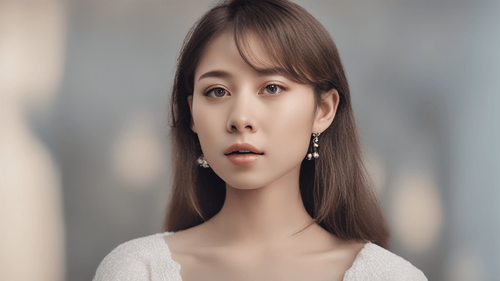
Introduction
In the ever-evolving landscape of artificial intelligence, one of the most remarkable advancements is the AI image generator based on images. This cutting-edge technology holds the potential to transform various industries, from creative arts to healthcare and beyond. In this comprehensive guide, we will delve into the intricacies of AI image generation, exploring its mechanics, applications, and the exciting possibilities it offers.
Understanding AI Image Generation
AI image generation, also known as image-to-image translation, involves leveraging deep learning algorithms to transform one type of image into another. This process is built upon the concept of generative adversarial networks (GANs), which pit two neural networks against each other: a generator and a discriminator. The generator creates images, while the discriminator evaluates their authenticity. Through iterative training, these networks learn to produce high-quality images that closely resemble real-life examples.
How Does It Work?
The process of AI image generation based on images can be broken down into several key steps:
1. Data Collection and Preprocessing
The first step involves gathering a diverse dataset of paired images. For instance, in a project aiming to convert sketches into colorful landscapes, the dataset would consist of corresponding sketch and landscape images.
2. Architecture Selection
Choosing an appropriate GAN architecture is crucial. Common architectures include CycleGAN, Pix2Pix, and UNIT, each with its unique strengths and applications.
3. Training the GAN
The GAN is trained by feeding the paired images into the generator and measuring the discriminator's ability to distinguish between real and generated images. The generator continuously refines its output to minimize this distinction.
4. Fine-Tuning and Optimization
Fine-tuning the GAN involves adjusting hyperparameters and optimizing the neural networks for enhanced image quality and realism.
5. Generating New Images
Once the GAN is trained, it can generate new images by inputting source images into the generator. The AI then transforms these images based on the learned patterns.
Applications of AI Image Generation
The applications of AI image generation based on images are vast and diverse. This technology has the potential to revolutionize various industries:
Art and Creativity
AI image generation opens up new horizons for artists and creators, enabling them to explore innovative techniques and styles. It can automate the process of turning sketches into fully realized artworks or even emulate the brushstrokes of famous painters.
Fashion and Design
In the fashion and design world, AI image generation can assist in fabric pattern creation, virtual try-ons, and generating design variations based on input sketches.
Healthcare
Medical imaging can benefit from AI image generation by converting low-resolution scans into high-quality images, aiding in accurate diagnosis and treatment planning.
Urban Planning
AI can transform architectural sketches into photorealistic urban landscapes, providing a visual representation of planned developments.
Gaming and Entertainment
Game developers can use AI image generation to create lifelike characters, immersive environments, and realistic textures, enhancing the gaming experience.
FAQs
How accurate are the generated images? AI image generation has made significant strides in producing realistic images, but the accuracy may vary based on factors such as dataset size and architecture choice.
Can AI-generated art truly match human creativity? While AI can produce impressive artworks, human creativity remains unparalleled in its depth and emotional expression.
What industries are at the forefront of adopting AI image generation? Industries such as advertising, film production, and interior design are embracing AI image generation to streamline their creative processes.
Is AI image generation ethical? Ethical considerations arise when AI generates content that resembles copyrighted works or perpetuates biases present in the training data.
Are there any limitations to AI image generation? AI image generation struggles with producing fine details and may generate images that lack coherent composition in some cases.
What does the future hold for AI image generation? As AI algorithms continue to advance, we can anticipate even more realistic and diverse image generation capabilities, impacting industries in profound ways.
Conclusion
The world of AI image generation based on images is a captivating blend of creativity and technology. From transforming sketches into masterpieces to revolutionizing medical imaging, this technology exemplifies the power of artificial intelligence. As we venture into the future, AI image generation promises to reshape industries, redefine artistic possibilities, and unlock novel avenues for human expression and innovation.